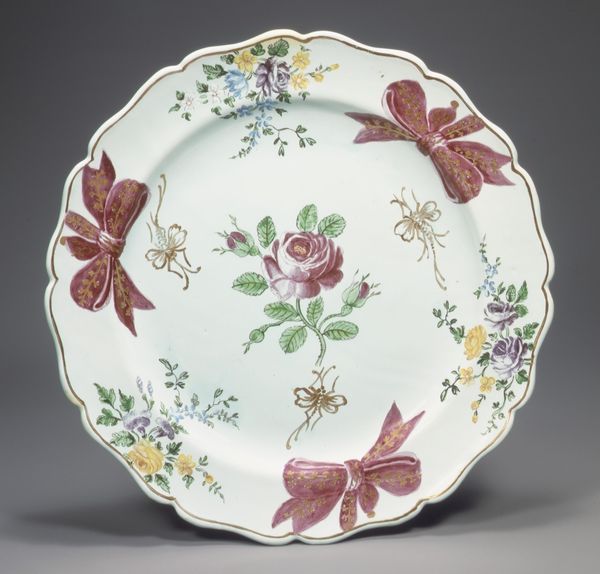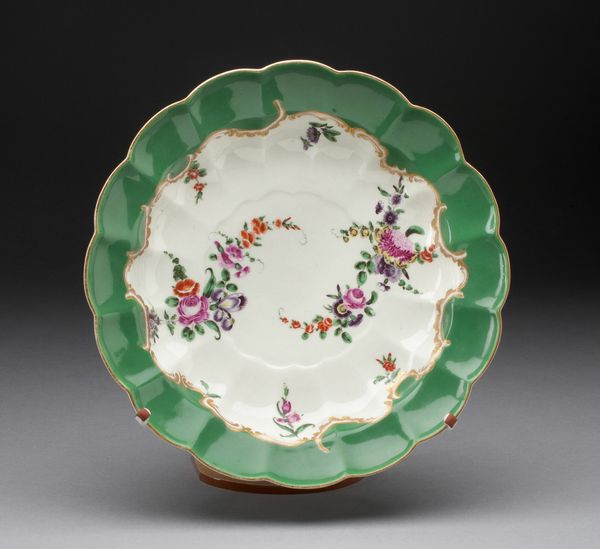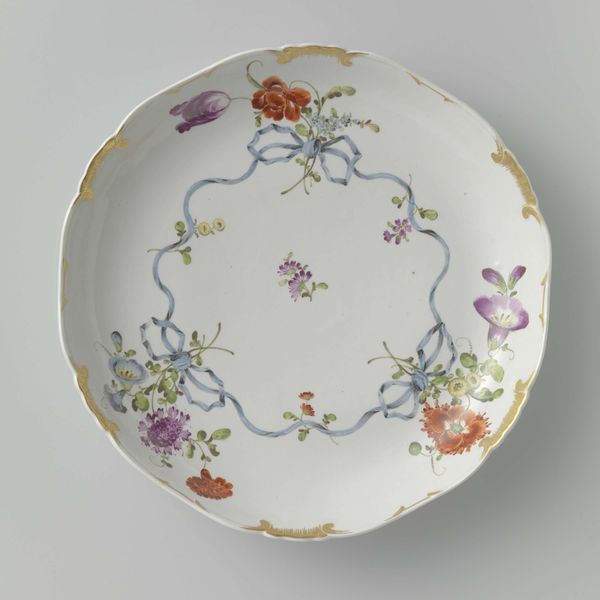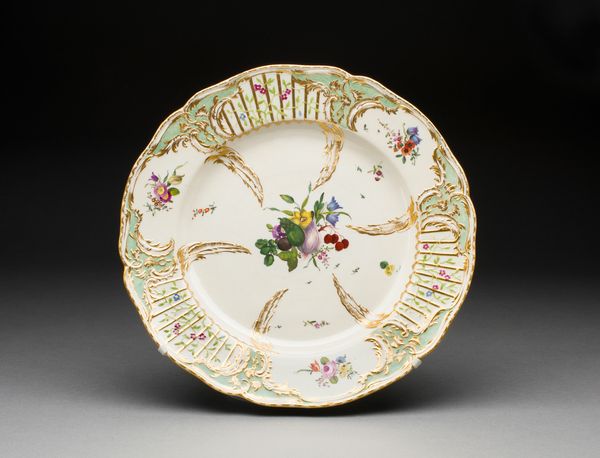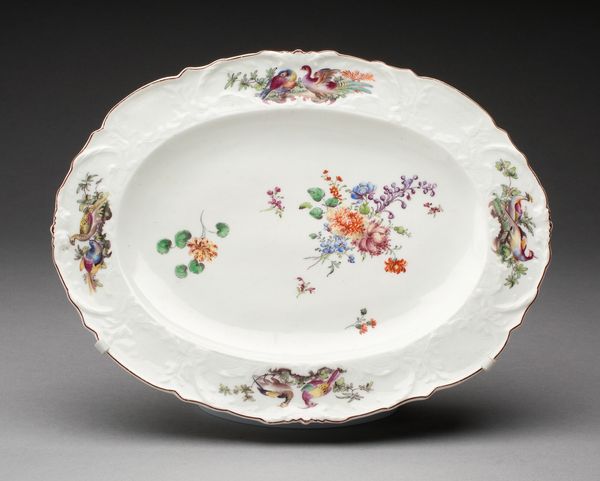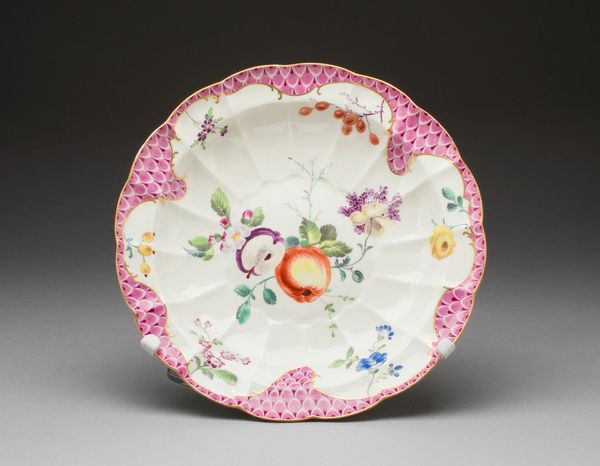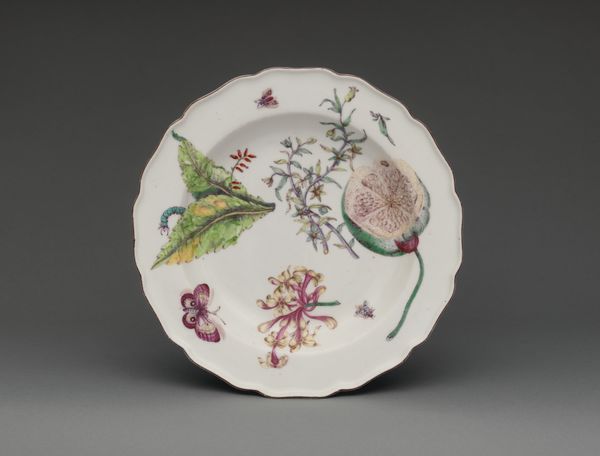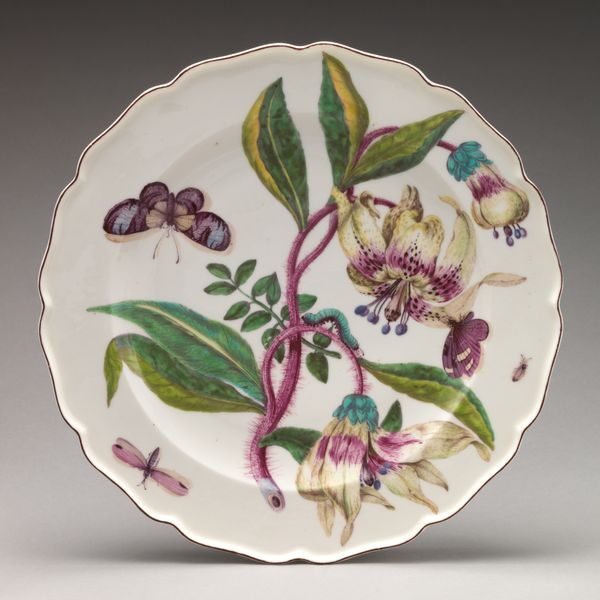
ceramic, sculpture
#
egg art
#
cake food
#
product fashion photography
#
ceramic
#
flower
#
culinary art
#
food illustration
#
stoneware
#
sculpture
#
ceramic
#
food art
#
watercolour illustration
#
decorative-art
#
cartoon theme
Dimensions: Diameter: 10 1/8 in. (25.7 cm)
Copyright: Public Domain
Editor: This is Félix Bracquemond's "Plate" from 1879, made of ceramic. There's a single flower with ribbons swirling around it, and it feels both delicate and… almost defiant. What do you see in this piece, especially considering its context? Curator: This plate, while seemingly a simple decorative object, offers a window into the complex interplay of art, gender, and industrialization in late 19th-century France. Bracquemond was deeply engaged with Japonisme, and we see that influence in the asymmetrical composition and the focus on the natural world. But let's think about the broader context: who was producing ceramics like this, and for whom? Editor: Presumably it was for wealthier households? Something that could be displayed rather than strictly used? Curator: Exactly. The rise of the middle class created a demand for decorative objects that signaled taste and refinement. But more crucially, think about the women involved in this production—often working in factories under harsh conditions, their labor undervalued and invisible. Does that impact your reading of the delicate floral motif? Editor: It does. The beauty seems almost ironic, given the exploitative labor behind it. Are the ribbons perhaps also a symbol of constraint? Curator: They could certainly be read that way. Art Nouveau often used floral and organic motifs to represent the feminine, but also to confine it within certain aesthetic parameters. Bracquemond was certainly an innovator in terms of technique, but it’s important to understand his work within the broader socio-economic forces at play. Editor: This gives me a lot to consider beyond the visual appeal of the piece. It is a reminder to analyze all factors at play within a culture during a particular era. Curator: Precisely, thinking intersectionally, we can move past surface appearances and uncover deeper meanings and power dynamics embedded within art.
Comments
No comments
Be the first to comment and join the conversation on the ultimate creative platform.

